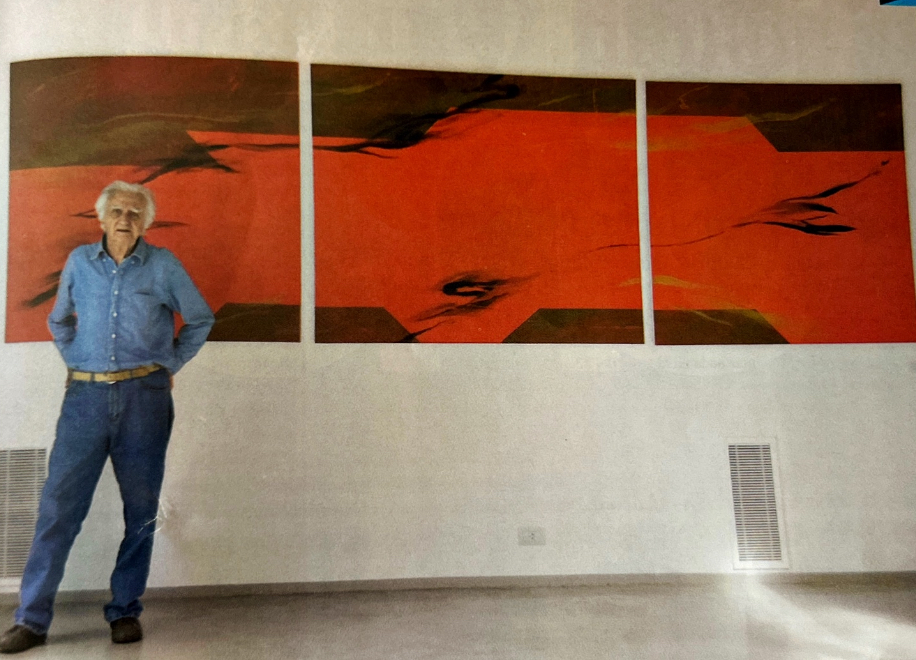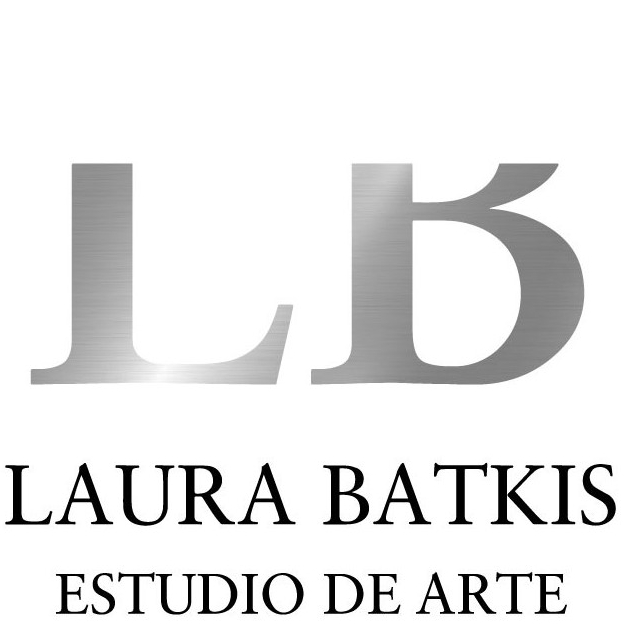La Mano
Miguel Ocampo – The Last Dandy of Argentine Art
No. 61 – Buenos Aires, April 2009.

Miguel Ocampo, a historical figure, was part of the group of abstract artists from the late ’50s and divided his time between diplomatic activity and artistic life. Laura Batkis interviewed him in Córdoba.
Settled in La Cumbre 30 years ago, he began thinking about what would be left of his legacy when he learned of the ineffectiveness of the State in protecting artists’ heritage. That which the artist calls our propensión a la novelería (“propensity for novelry”). So he built a permanent room for his artworks. We went to meet him and interviewed this exquisite 86-year-old artist, probably the last dandy of Argentine art.
Why did you choose to create a Sala (room) and not an Ocampo Museum?
Because Museum sounds solemn, like Mausoleum.
Is it a project that you’ve had for a long time?
Yes, it was inaugurated on January 4, 2008. It took us four years of work with the architect Sebastián Martínez Villada. I am an architect and I had started with a project, but it was only for very few paintings. Sebastian had created this project and I liked it more than mine because of the scale and the views of the garden.
When did the idea of a permanent room for your works come up?
A long time ago, about ten years ago. I started to organize the paintings in my workshop for when I’m no longer around and the day will come when my three daughters will say “what shall we do with daddy’s paintings?” I decided to make an inventory classifying the paintings with categories like the ones used at the university, such as “outstanding”, “distinguished”, “good” and “passed”, putting together groups. To tidy, in short. Then I thought about what they were going to do with these paintings, where they were going to put them, whether to pay a deposit, or leave them in a gallery that would never see them again, and if they sold them it wasn’t always easy to collect… So I thought about doing this. And the truth is that I didn’t foresee that it would be such a healthy experience for me.
In what sense?
Many people pass by and leave very happy, it’s a revelation of that abstract thing we call “the public”. Because we don’t really paint for the people, we paint for the art scene. And I understood that very clearly here.
Did you paint to receive the opinion of your colleagues?
Deep down, yes. They are the people who go to the gallery, who go to the exhibitions. When you talk to them they have an approach to the painting that is influenced by the critical environment. And they tell you “it reminds me of this or that artist”. Here, on the other hand, this public looks at the painting with total independence from the critics and people tell you what they feel, the perception is different.
What is the future of this Sala Ocampo like?
That is the big question, I think it is going to end up being a Foundation. According to the experience it has with people, I think I will make a set of intangible paintings. To be left in the room.
A few years ago, when I came here and you told me about this room, which was an idea at the time, you told me that you were doing this because Argentina does not care about the legacy of artists, so you personally decided to make up for that.
Yes, it is the experience of all my friends who are in the afterlife. Here came the bulldozer; I don’t want to start naming names but it’s as if they had disappeared. Sometimes they are seen again in a retrospective, but in general it is as if they did not exist.
In Argentina, if an artist doesn’t bother to publish a book or do what you did with the Sala, they disappear.
Yes, it is not that we think we are Leonardo Da Vinci, but it is the work of a lifetime and I think that each artist contributes something, or a lot. For example, there is a painter that I like very much, it is Sívori. I would have liked to see a retrospective of his work twenty years ago. The artist dies and it’s over. I think that is a very serious failing on our part.
Will you do temporary exhibitions?
My original idea was to make exhibitions with other painters. But I have given up because money is needed and I am not in a position to go out and look for sponsors. I want to use the remaining years and my good health to paint.
Do you still paint every day?
Yes.
The nature of this landscape in the mountains is integrated into your work.
Completely. Until I came to La Cumbre, my entire career had been as an abstract painter. When I arrived here, I saw the sunsets from my window and I looked at them as an abstract painting, because they were made up of a luminous plane and an opaque one. Until that moment I used the technique of splashing, without touching the painting. Starting to make a trunk with a brush touching the canvas was a new lesson, and without looking for it I started with figurative art. I also realized that we look in order to identify, a tree is a tree, with leaves and trunk. But deep down a tree is a living being and each tree has its own personality. That led me to draw from nature, trying to be as candid as possible, creating little leaf by little leaf. So I noticed that nature has a geometry, a very deep order of straight lines and curves that is also a little bit like the construction of the human body.
What is art to you?
The meaning of life. That’s also why I made this room, which at the same time made what I painted for clear to me. People leave here grateful; it is registered in the guestbook. So my painting also serves to make people happy.
You just told me that you don’t have to paint for the Florida Garden.
Yes, the art world is full of conventions. Fabian Lebenglik wrote in the prologue of my show at the Recoleta Cultural Center that for painters I was a diplomat and for diplomats I was a painter. It took me a while to get recognition in Argentina. The Recoleta exhibition in 1997 was my entrance to the artistic environment.
Late recognition.
Yes, it was also the result of my isolation.
BY LAURA BATKIS
